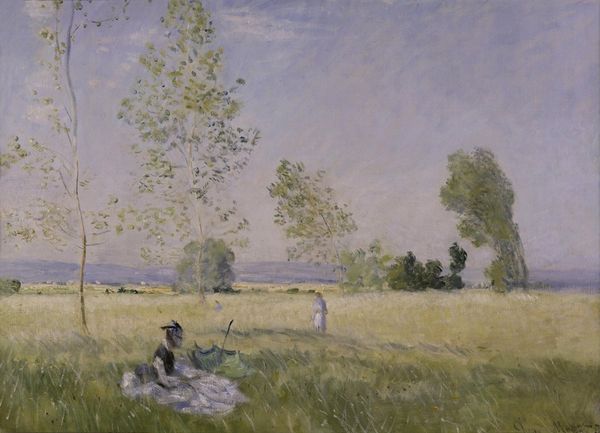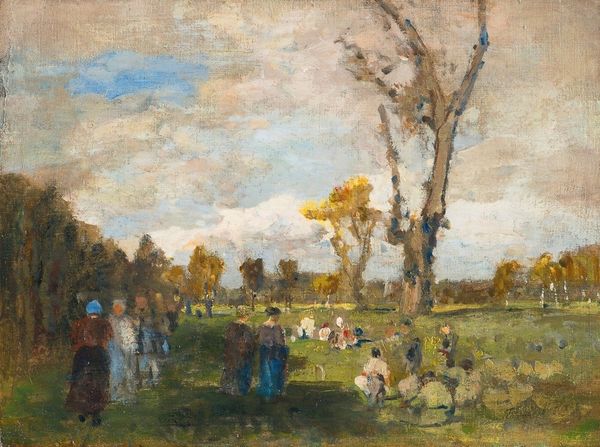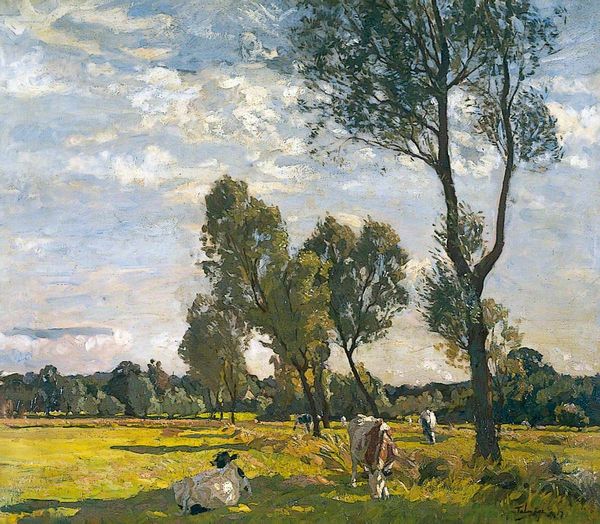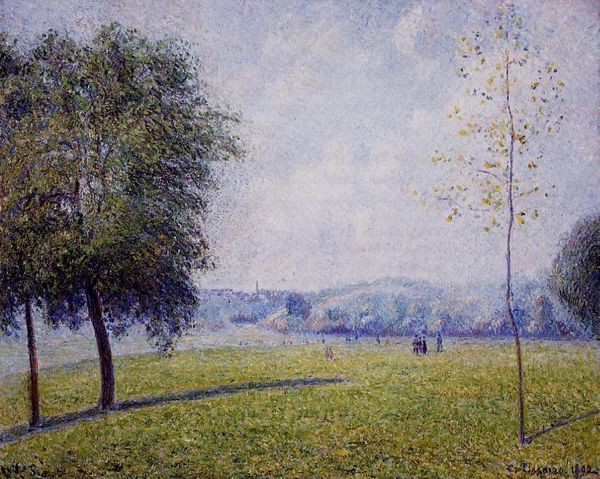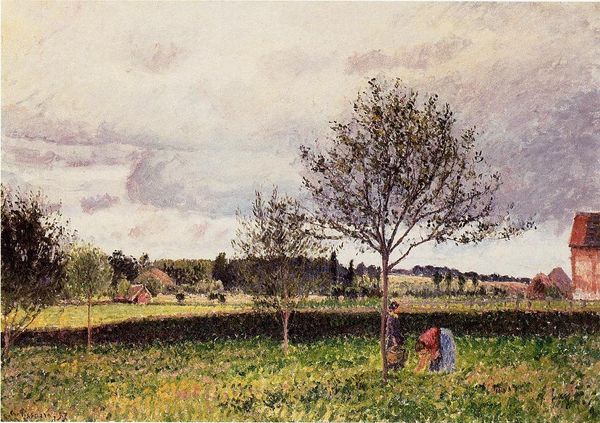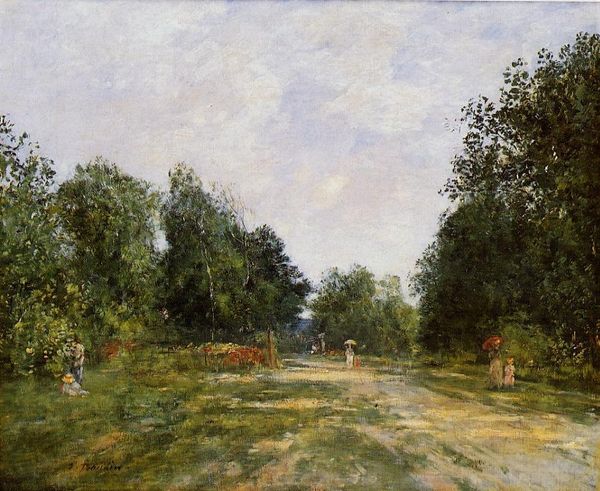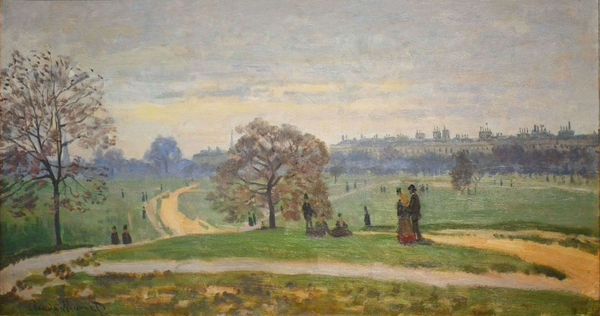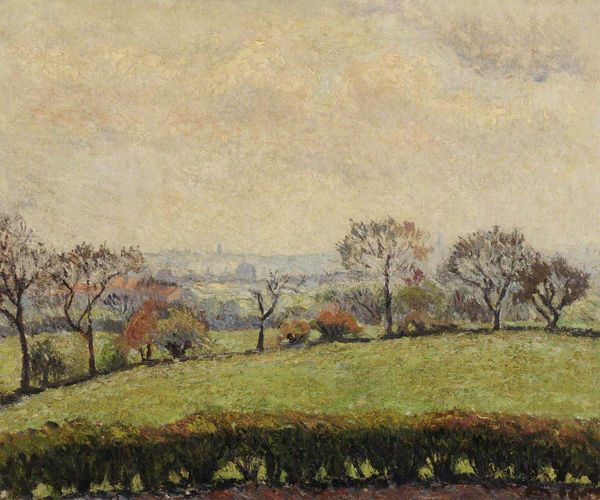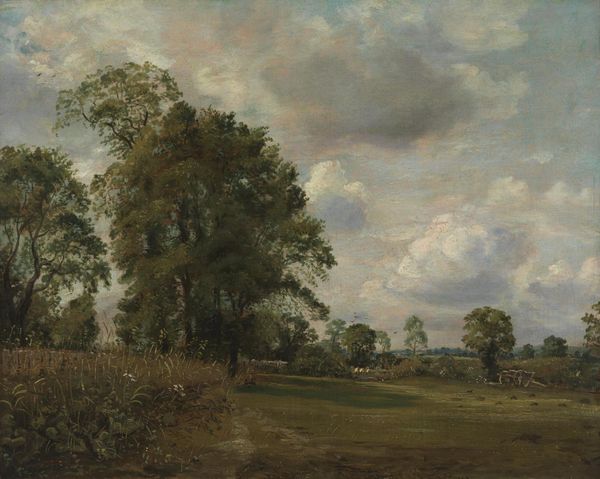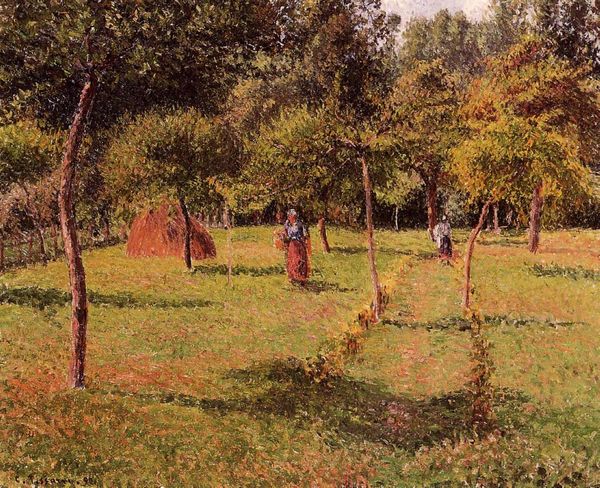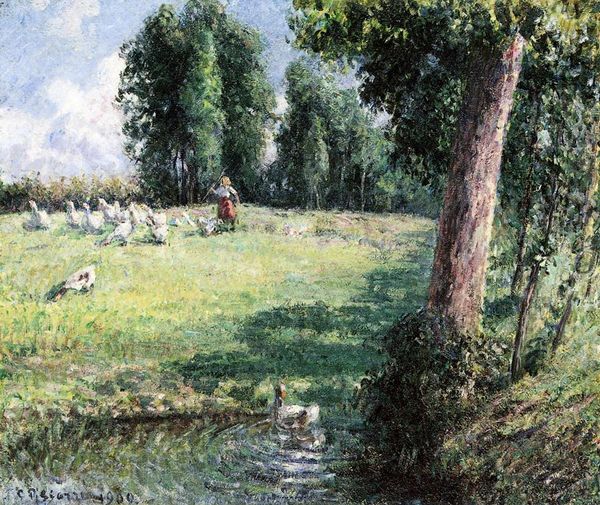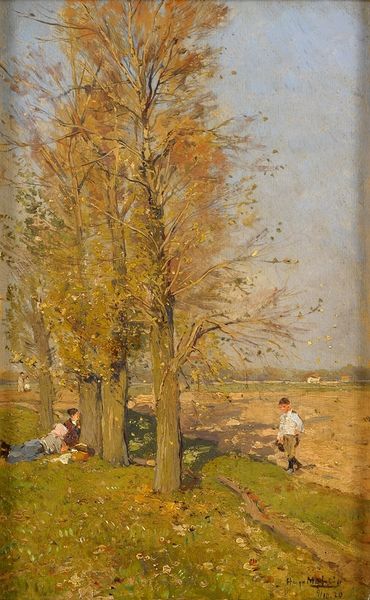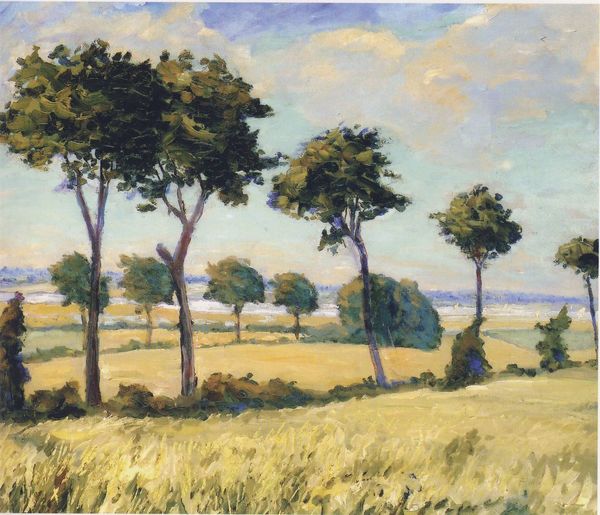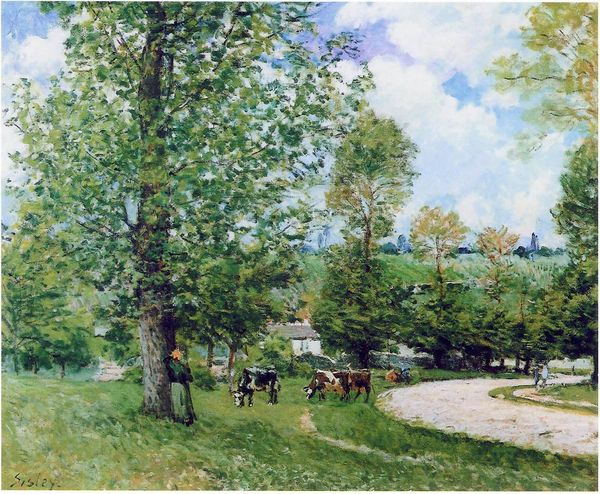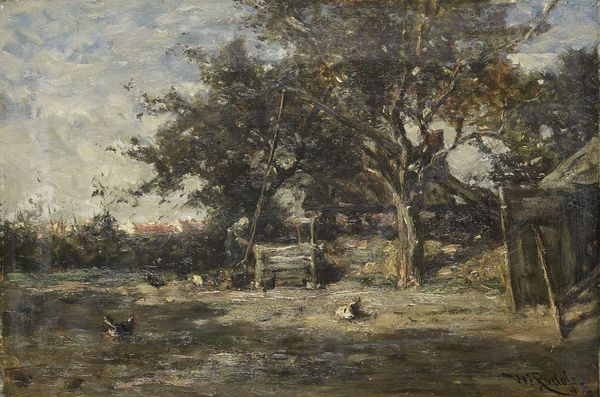
Copyright: Public domain
Editor: This is Camille Pissarro’s "Jubilee Celebration at Bedford Park, London," painted in 1897 using oil paint. I am struck by the bustling atmosphere; the park feels full of life, captured with very loose brushstrokes. What aspects stand out to you? Curator: I immediately notice the materiality. Consider the sheer quantity of paint required to render this scene, a landscape overwhelmed by commercial spectacle: tents, flags, a thronging crowd. What is being celebrated here, and by whom? The Jubilee commemorates the wealth and power produced in British colonies. Who benefited, and how is it materially manifest in this image? Editor: So, the brushstrokes aren’t just about capturing a fleeting moment, but also about… the resources needed for that moment? Curator: Precisely. Look at the tents; they were industrially produced, their canvas woven in factories drawing upon global resources. Consider the clothes of the attendees – mass-produced textiles making an appearance in what seems a rural surrounding. Editor: The painting does feel like it's on the cusp of the modern world and something older. Almost staged with the tents set on the foreground, what would be then the implications? Curator: It highlights the role of production and consumption in shaping even ostensibly "natural" spaces. This image prompts questions about how labor, industry, and empire were embedded within everyday experiences and leisure activities. Consider that paint itself – where did Pissarro source his pigments, and what was the social cost of their extraction and production? Editor: I hadn’t thought of it that way before; I was focused on the Impressionistic style, but thinking about the materials themselves gives it so much more depth. Curator: Indeed. Seeing the art within its broader material context offers a powerful critique of its cultural value and raises compelling questions of resource exploitation in service of both art and empire.
Comments
No comments
Be the first to comment and join the conversation on the ultimate creative platform.
